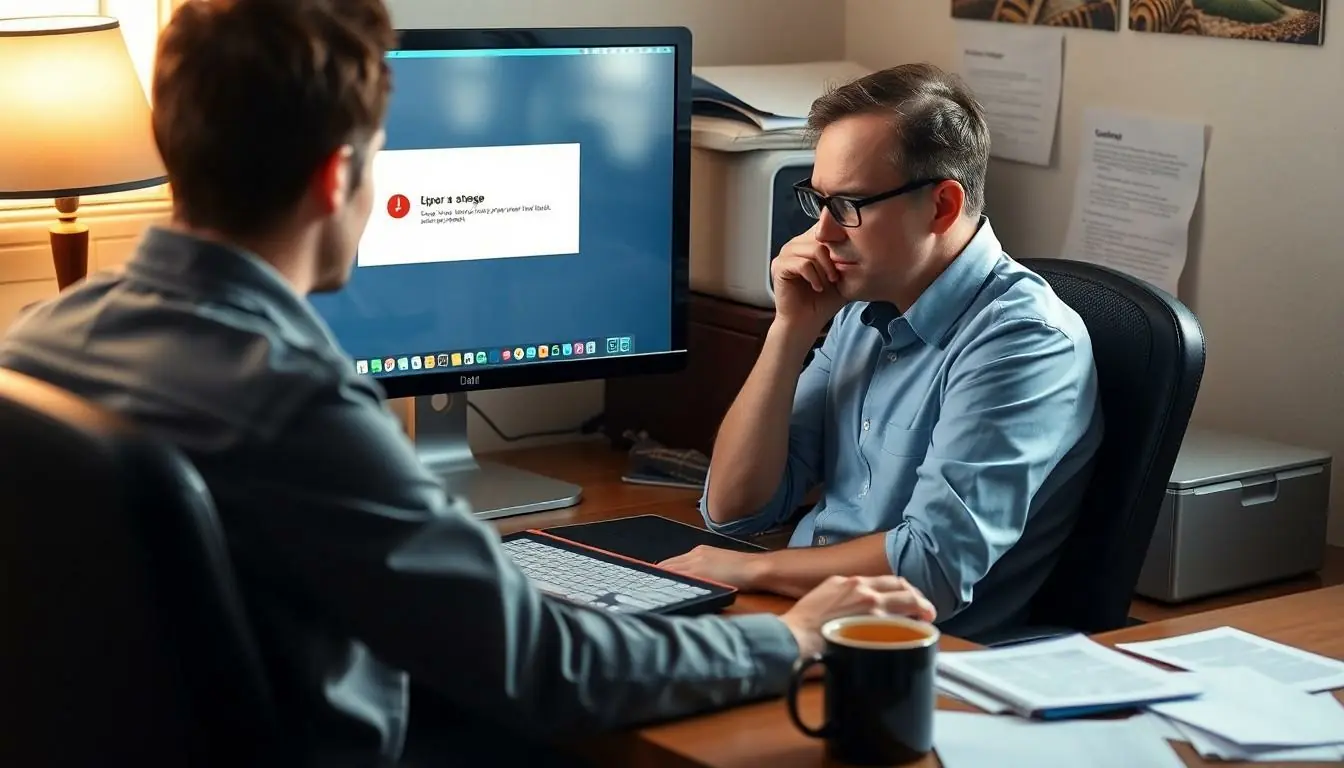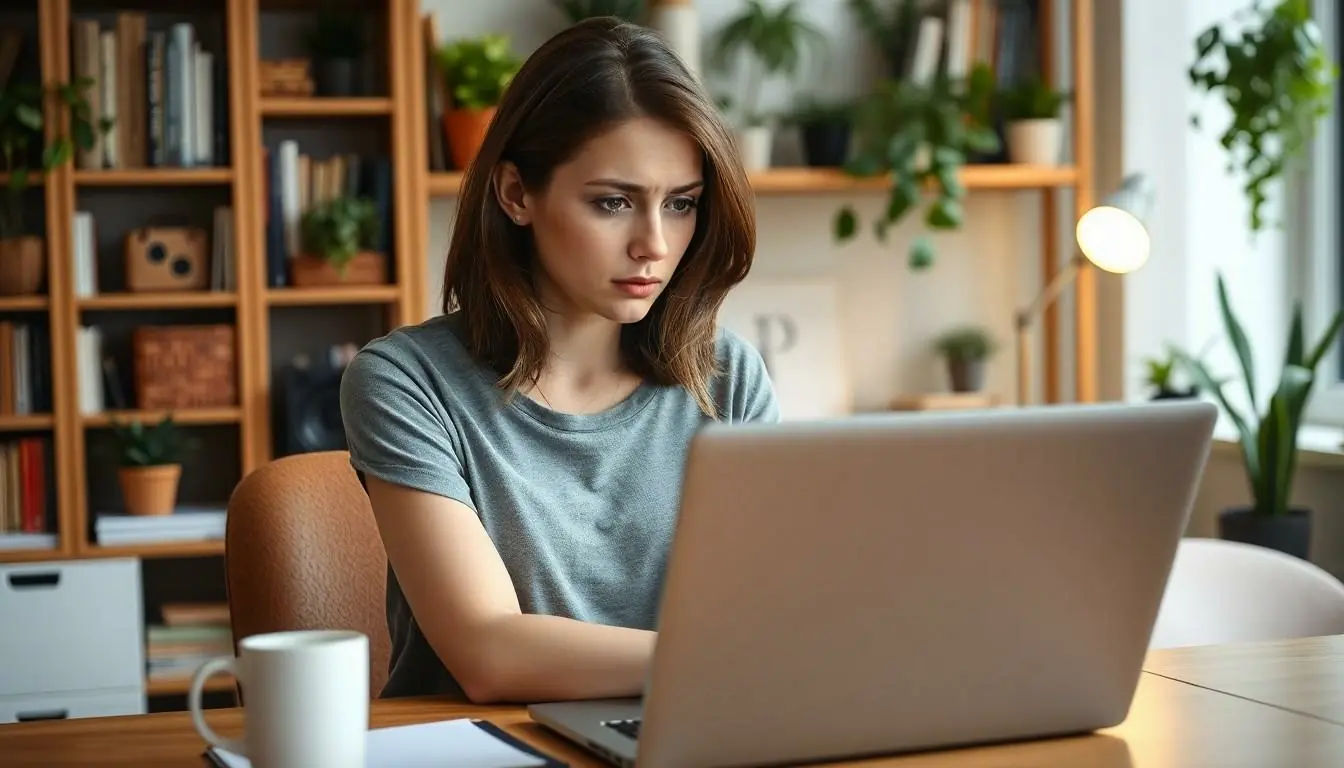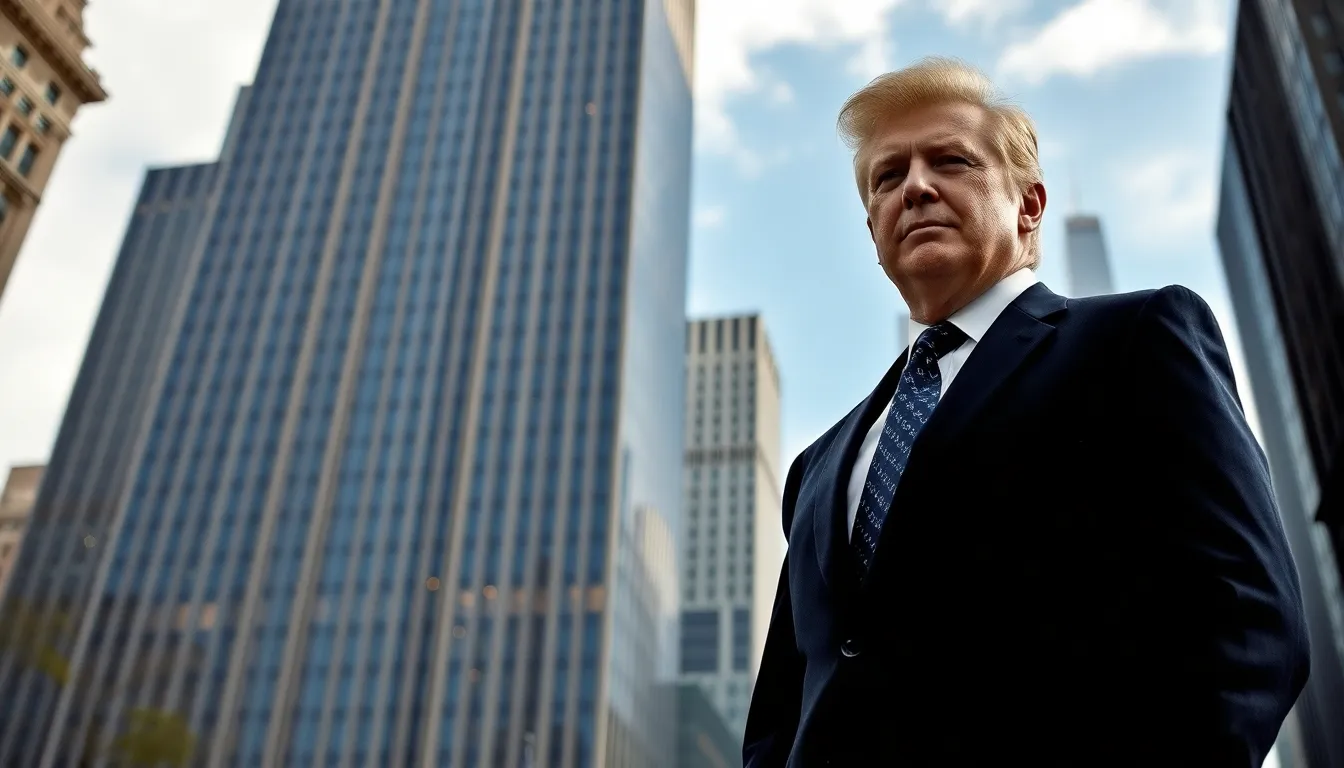Ever found yourself staring at your screen, desperately trying to upload an image to ChatGPT, only to be met with a digital shrug? It’s like showing up to a potluck with a gourmet dish and realizing the host only serves plain toast. Frustrating, right?
Table of Contents
ToggleUnderstanding ChatGPT Features
ChatGPT’s design focuses primarily on text-based interactions. Image uploads aren’t a supported feature due to the platform’s current capabilities. Users experience this limitation when attempting to enhance conversations with visual content. Such restrictions can lead to confusion and dissatisfaction, especially when users expect a more versatile interface.
Functionality includes generating text responses based on prompts, answering queries, and assisting with a variety of topics. Every feature aims to streamline communication and improve user engagement through text. Users often wonder if future updates might include image support, yet no official announcements confirm this.
Reliance on text helps maintain a simplified user experience. Developers prioritize clear, effective communication, allowing for rapid responses and easy understanding. Text-only interactions ensure accessibility for all users, regardless of device or internet speed.
Requests for features like image uploads highlight a common desire for richer interactions. Many users believe images could enhance clarity or provide visual context. However, until the platform incorporates multimedia capabilities, users must adapt to the text limitations.
Feedback from the community often informs future improvements. Ensuring user satisfaction remains a key objective for the development team. Open discussions about potential features like image uploads contribute to a better understanding of user needs.
Common Issues with Image Uploads

Users encounter several problems when trying to upload images to ChatGPT. These issues stem primarily from technical limitations and user account restrictions.
Technical Limitations
ChatGPT’s current infrastructure supports only text-based communications, which restricts image uploads. This design choice emphasizes simplicity and ensures all users, regardless of their devices, can access the service. File formats, sizes, and resolutions also play a role in this limitation. Images often require specific formats, and exceeding file size limits can lead to upload failures. Potential users must understand these constraints when seeking to share visual content.
User Account Restrictions
Some users face account-related barriers that prevent image uploads. The platform might impose rules based on account types or user settings. Access restrictions can arise from using a free-tier account instead of a premium option. Verification issues may also contribute to the inability to upload images. Familiarity with the specific terms of service can clarify these limitations and guide users on what features their accounts support.
Possible Solutions
Users can explore several methods to address issues when trying to upload images to ChatGPT. These solutions focus on common problems and technical aspects that may cause upload difficulties.
Check File Format and Size
Ensure that files meet the supported formats and size limits. Supported file formats typically include JPEG, PNG, and GIF. Files exceeding the maximum size—often limited to 5 MB—may fail to upload. Users often encounter issues when uploading images with unsupported resolutions. Checking these specifications helps avoid frustrations. Finding the right format and size can lead to successful uploads and smoother interactions.
Update Your ChatGPT Application
Keeping the ChatGPT application updated enhances performance and may resolve upload issues. Participants using outdated versions might miss crucial fixes or improvements. Verify if the latest version is installed on the device by checking application settings. Updates often include features addressing known bugs, providing a more stable platform. Regular updates contribute to a better experience, allowing users to utilize all available functionalities effectively. Adjusting the application to the latest version can significantly influence performance.
Exploring Alternative Methods
Exploring ways to enhance interactions without image uploads can provide users with creative solutions. One effective approach involves utilizing descriptive language to convey visual information clearly. Users may describe images in detail to ensure others understand the intended message.
Incorporating external links into conversations serves as an alternative method. By sharing links to relevant images or diagrams, users can provide context or clarification that text alone may lack. This method promotes a richer dialogue while working within the platform’s current limitations.
Utilizing markdown features effectively can also help enhance communication. Users can format text to emphasize key points, making it easier to understand complex ideas without images. Lists, tables, and headers break down information, promoting clarity and engagement.
Sharing visual content through other applications can complement discussions in ChatGPT. For instance, collaborating on platforms like Google Docs allows users to include images alongside their text discussions. Then, they can reference discussions back in ChatGPT for context.
Lastly, participating in community forums or feedback channels can contribute to future development. Users sharing their experiences and needs helps inform potential features that may support image uploads down the line. Engaging with other users fosters an understanding of shared challenges and encourages developers to consider enhancements based on user feedback.
The inability to upload images to ChatGPT can be a source of frustration for users seeking a richer interaction. While the platform currently prioritizes text-based communication, understanding its limitations can help users adapt their approach. By utilizing descriptive language and external links, they can still convey visual information effectively.
Feedback from the community remains vital in shaping future updates. As users express their desires for enhanced features, developers can better understand their needs. Until image uploads become a reality, leveraging existing tools and fostering discussions will ensure users continue to engage meaningfully with the platform.




